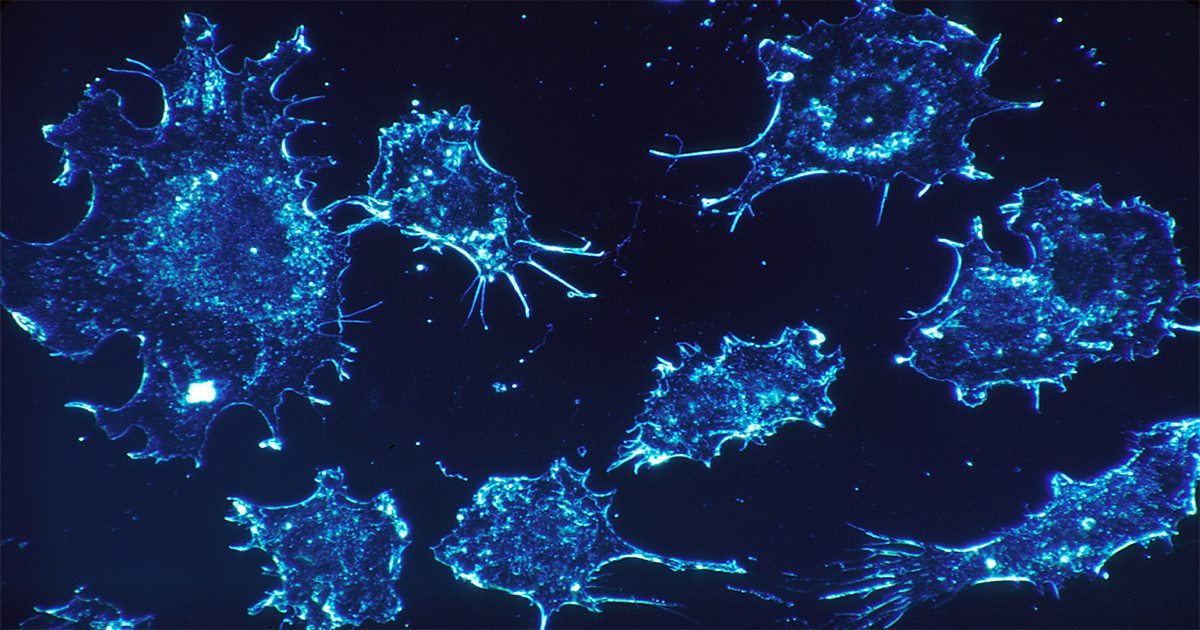Mesothelioma Help Cancer News

Mesothelioma Patients May Someday Use a Pinworm Drug to Treat the Asbestos Cancer
When looking for a new, effective anti-cancer treatment, researchers often turn to drugs approved by the U.S. Food and Drug Administration for other diseases or conditions. Finding on off-label use for a drug can shorten the research time and cost to market for treatment of other diseases. Researchers are now looking at repurposing a drug approved for pinworms to treat cancer.
According to a Jan. 30 report from NPR.org, researchers at Johns Hopkins University found that mebendazole, used to treat pinworms, parasitic worms that can live in the large intestine, may be effective in fighting cancers, including brain, lung, and potentially, mesothelioma. The team found that when mice that had pinworms, and were implanted with brain cancer cells, were treated with mebendazole the cancer did not develop.
Encouraged by those results and by the fact that other researchers were conducting similar studies for lung cancer and melanoma, the researchers began two Phase I clinical trials to test the drug’s safety and tolerability in brain cancer in children and adults. The drug has been well tolerated, as expected by the decades-old drug used worldwide to treat pinworms.
“Based on the preclinical studies it looks like it has promise,” says Tracy Batchelor, director of the division of neuro-oncology at Massachusetts General Hospital, who is not involved in the research, according to NPR. “The next step is to look for a benefit in a Phase 2 trial.”
A Phase II trial will determine whether mebendazole is effective on the cancer in people. The Johns Hopkins researchers hope to conduct that sort of trial in adult brain cancer patients.
The benefit of an FDA-approved treatment is that it has already been through clinical trials so there are few surprises for patients and physicians. Side effects are well-known and can be managed. One drug’s success in one condition could lead to an equally effective drug in other diseases.
Clinical trials and the use of off-label drugs bring the best options for improved survival to pleural mesothelioma patients. The cancer that is aggressive and terminal has proven to be resistant to many cancer treatments driving researchers to continue to search for improved care.
“It’s not likely that mebendazole or any other single repurposed drug is ever going to cure cancer,” said Bruce Bloom, president and chief science officer of Cures Within Reach, which has helped to fund the Johns Hopkins research. However, NPR reports, there is the possibility that combinations of repurposed drugs could help in the fight against cancer. Bloom adds that results from this research is still years away.
Recent research has increased survival and quality of life for mesothelioma patients, and many hope to get to the point where mesothelioma is managed as a chronic disease.
To find clinical trials where mebendazole is being tested on cancers visit ClinicalTrials.gov.

Lung Cancer Driver Discovery May Lead to Novel Therapy for Some Mesothelioma Patients
Lung adenocarcinoma, the most aggressive subtype of non-small cell lung cancer (NSCLC), comprises nearly 40 percent of lung cancer diagnoses. The KRAS gene is the most significant driver of this cancer, and is also found in some pleural mesothelioma cases. Researchers have been stymied by this tough gene that nearly always fights off treatments building resistance to the drugs. Now, researchers report they have found a “genetic promoter” that drives this type of cancer and could lead to a new anti-cancer therapy.
Researchers from the Mayo Clinic report that the Ect2 gene (Epithelial Cell Transforming 2) is responsible for cytokinesis, cell division, in normal, healthy cells. However, they found that Ect2 was not needed for cytokinesis in lung adenocarcinoma cells, leading them to uncover the other function Ect2 serves in cancerous cells. They found that Ect2 boosts ribosomes, which “manufacture proteins from messenger RNA instructions.”
“Ect2 drives increased synthesis of ribosomal RNA, which in turn gives rise to increased ribosomes,” said Alan Fields, Ph.D., senior author on the paper and a cancer biologist in the Department of Cancer Biology at Mayo Clinic’s Florida campus, in a Jan. 19 press release. “While it’s been known for a long time that tumor cells have elevated ribosome levels, this paper is the first to show that Ect2 supports tumor cell growth by stimulating ribosome biogenesis.”
Pleural mesothelioma is a serious cancer affecting the lining of the lungs that occurs in individuals previously exposed to airborne asbestos fibers. Asbestos is a known carcinogen and is also proven to cause lung cancer and asbestosis, a chronic lung disease. While there are some differences between pleural mesothelioma and lung cancer, such as the fact that mesothelioma displays as a large mass of interlocked tumors whereas lung cancer is characterized by more distinct, individual tumors, the treatments are often similar.
“KRAS-mediated lung adenocarcinoma is a particularly deadly form of lung cancer, in part because attempts to directly target KRAS therapeutically have not been successful in the clinic,” says the study’s lead author, Verline Justilien, Ph.D., an assistant professor in the Department of Cancer Biology at Mayo Clinic’s Florida campus.
“Our current findings reveal a potential novel therapeutic strategy for treating mutant KRAS lung adenocarcinoma cells in which Ect2 is overexpressed,” Dr. Justilien said.
The American Cancer Society estimates about 222,500 new cases of lung cancer and nearly 155,870 deaths from lung cancer in the U.S. in 2017. Close to 3,000 Americans will be diagnosed with mesothelioma this year with nearly the same number dying from the terminal cancer.
Read the results of the Mayo Clinic study in the January 19 issue of Cancer Cell.

A Pair of Proteins Could Lead to a New Lung Cancer or Mesothelioma Treatment
Last month, MesotheliomaHelp reported on early research from the UK where resea
rchers identified the Spns2 gene could reduce metastasis in lung cancer, and, potentially, in mesothelioma. Identifying a gene or protein effective in halting metastasis is a hot research topic, and now, another team of researchers report they have taken a closer look at a two-part protein to assess its ability to slow cancer growth.
Researchers from the Medical University of South Carolina (http://academicdepartments.musc.edu/newscenter/2016/wrangle-rubinstein-lung-cancer.html) knew that the NRP genes, NRP1 and NRP2, are up-regulated in cancer tumors leading to poor patient prognosis. However, the NRP2 protein is comprised of a 2a and 2b isoform, and when the scientists delved deeper into the effects on lung cancer, they found that while the two are “nearly identical” the differences were significant enough to affect cancer progression.
“Whenever we expressed NRP2b the cancer metastasized, and whenever we expressed NRP2a progression and metastasis were suppressed,” said Robert Gemmill, Ph.D. who holds the Melvyn Berlinsky Endowed Chair for Cancer Research at MUSC. “Clearly, with the 2b isoform, we have found something that promotes metastasis.”
Lung cancer and pleural mesothelioma, the signature cancer of asbestos, are both aggressive and both quickly metastasize, limiting survival. Past research has shown that it is this metastasis, not the original cancer tumors, that leads to death in nearly 90 percent of cancer patients. Unlocking the mystery of metastasis is critical for helping patients lead a longer life.
Through various experiments, the MUSC team found that the potent tumor suppressor, SEMA3F, was reduced or lost, while NRP2b was induced, leading to lung cancer progression. They then found that when NRP2b was knocked out, or suppressed, and NRP2a was induced, chemotherapy resistance was limited, and metastasis was limited.
These findings were encouraging to the team and they hope the findings will “open new avenues for potential therapies,” and that other scientists will pick up the research for development of new treatments for lung cancer. Gemmill points out that uncovering the effects of NRP2b could lead to monoclonal antibodies to target the 2b isoform, new immunotherapies, and possibly using NRP2b as a biomarker for predicting patients’ responses to treatment.
“I think a lot of people are going to sit up when they read this article and say, ‘I wonder what it does in my system?'” said Gemmill.
Nearly 3,000 Americans are diagnosed with mesothelioma each year. The cancer is terminal, and the prognosis is often less than 18 months.
Read the full study in the Jan. 17 issue of Science Signaling (http://stke.sciencemag.org/content/9/450/rs12).

Progress in Treatment Comes from Past Experiences
When patients and families are beginning their journey with mesothelioma, it is hard not to get discouraged when looking at survival statistics. The statistics are often interpreted as devastating, but, keep in mind that they are just that: statistics. Progress in the treatment of mesothelioma is being made slowly.
I have taken care of mesothelioma patients for years throughout their journey, whether that be in the intensive care unit, before their surgery, after their surgery, non-surgical patients and during all different phases of the disease. I can put faces and events to the different phases of the mesothelioma journey. And I still remember one patient from years ago who shows us how progress in mesothelioma care has been made, and how important it is to get to a mesothelioma treatment center.
Years ago, this man in his early 50s, who had worked in shipyards and was diagnosed with mesothelioma, traveled from out of state for specialized care for his mesothelioma. He had surgery, and was recovering well, but while still in the hospital he developed a blood clot that went to his lung, a pulmonary embolus. He became acutely short of breath and despite immediate medical intervention he died. It was a devastating complication, and he is still remembered by those who took care of him. Treatment has changed now, and it was by learning from the treatment of other mesothelioma patients that it has improved.
Now, in 2017, when any mesothelioma patient has surgery they are placed in pneumatic boots, that compress the legs to avoid blood clots. Patients routinely undergo non-invasive ultrasounds of their extremities to look for any blood clots on postoperative day seven. Walking is emphasized before and after surgery. If a patient has to stay in bed, they are placed on an anti-coagulant subcutaneous injection to help prevent any clots. Clots are screened for, and aggressively treated if detected.
This week, a mesothelioma specialist gave a talk and he referenced how important it is to come to a mesothelioma center. Although progress is being made, it is probably not fast enough for anybody. Yet, we have learned and progressed, and treatment is constantly being analyzed and perfected.

What the Mesothelioma Commercials Don’t Tell You
If you live in the U.S., you may have learned everything you know about mesothelioma through television advertisements by law firms with the meme “If You or a Loved One Has Been Diagnosed with Mesothelioma”. Although these commercials paint a bleak picture for victims of the disease and ensure the viewers that compensation is available to them, there is still plenty more viewers should know about mesothelioma.
Facts About Mesothelioma:
- Mesothelioma is a deadly cancer caused by past exposure to asbestos. There are few effective treatments, and there is no cure.
- Most often, asbestos exposure occurred at work. Victims often worked as plumbers, pipefitters, insulators, electricians, mechanics, car mechanics and in shipyards and mills.
- Military veterans make up nearly one-third of all mesothelioma cases. Military veterans were exposed to asbestos in the barracks, on ships and in boiler rooms, among other places.
- Spouses and children of workers who brought asbestos fibers home on their clothes, shoes and hair can develop mesothelioma. This form of exposure is known as second-hand exposure and is just as lethal.
- Mesothelioma symptoms, such as pain, coughing and difficulty with breathing, develop decades after the initial asbestos exposure. It can take as long as 60 years before symptoms present themselves.
- Nearly 3,000 Americans are diagnosed with mesothelioma each year with approximately the same number losing their lives to the disease.
Compensation for Mesothelioma Victims
A complex, aggressive, and incurable disease, like mesothelioma, requiring the services of specialized doctors, complex treatments, and caregiver support can lead to excessive bills. Managing these costs is challenging and sometimes even impossible. However, compensation for physical, emotional and psychological pain and suffering may be available to mesothelioma victims.
It is important to take action to claim compensation for your asbestos disease. The time you have to make a claim begins counting down the day you are diagnosed with mesothelioma. The time limit, or statute of limitations, varies by state. In New York, for example, you have three years to file a claim.
- Military veterans: Have a legal right to claim financial compensation from the asbestos manufacturers that resulted in the illness. Veteran’s may also be eligible to file a claim with the Veteran’s Administration for compensation.
- Workers: Establishing the source of workers’ asbestos exposure will determine which asbestos company is responsible for the illness and, ultimately, responsible for compensation.
- Second Hand Exposure: Late last year, the California Supreme Court ruled that companies whose employees bring asbestos fibers home with them can be held liable in the case of an illness in a family member. This helps ensure that these mesothelioma victims receive compensation just as those workers or veterans who were at the source of the asbestos are eligible.
Lawyers Can Help You Make Financial Claims
You should find a lawyer who is compassionate and knowledgeable and with whom you feel comfortable enough to get you the best compensation.
If you want to make a claim for VA benefits, understanding the process and working through all the red tape can be daunting. Securing a lawyer can give you the best results.
Your health should be your biggest concern, and Mesothelioma Help encourages those diagnosed with mesothelioma to first research all possible treatment options and seek out mesothelioma specialists for the best care.
To better understand the cancer and how to move forward, get free a Patient’s Guide to Mesothelioma from the New York Mesothelioma law firm of Belluck & Fox, LLP.
- Find out about your treatment options and typical prognosis.
- Use the handy reference for your medical and legal questions.
- Use the personal journal to track your treatments and other important information
Anyone who has been diagnosed with mesothelioma should understand that they are a victim. Mesothelioma does not just happen to you, it is caused by the negligence of companies. They should be held responsible for your illness and should compensate you for the illness they caused.
Free Mesothelioma Patient & Treatment Guide
We’d like to offer you our in-depth guide, “A Patient’s Guide to Mesothelioma,” absolutely free of charge.
It contains a wealth of information and resources to help you better understand the condition, choose (and afford) appropriate treatment, and exercise your legal right to compensation.
Download Now